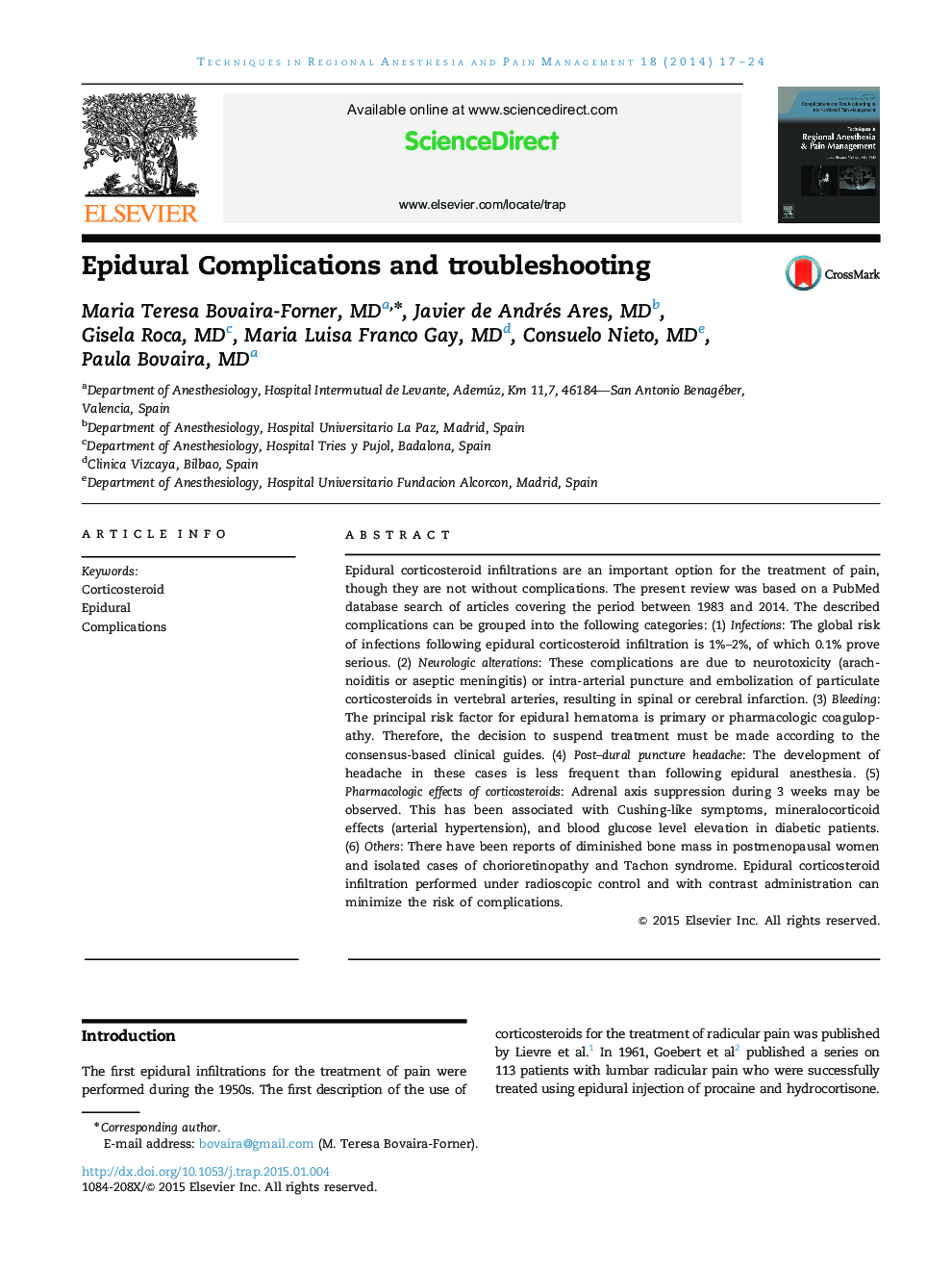| کد مقاله | کد نشریه | سال انتشار | مقاله انگلیسی | نسخه تمام متن |
|---|---|---|---|---|
| 2772217 | 1567864 | 2014 | 8 صفحه PDF | دانلود رایگان |
Epidural corticosteroid infiltrations are an important option for the treatment of pain, though they are not without complications. The present review was based on a PubMed database search of articles covering the period between 1983 and 2014. The described complications can be grouped into the following categories: (1) Infections: The global risk of infections following epidural corticosteroid infiltration is 1%–2%, of which 0.1% prove serious. (2) Neurologic alterations: These complications are due to neurotoxicity (arachnoiditis or aseptic meningitis) or intra-arterial puncture and embolization of particulate corticosteroids in vertebral arteries, resulting in spinal or cerebral infarction. (3) Bleeding: The principal risk factor for epidural hematoma is primary or pharmacologic coagulopathy. Therefore, the decision to suspend treatment must be made according to the consensus-based clinical guides. (4) Post–dural puncture headache: The development of headache in these cases is less frequent than following epidural anesthesia. (5) Pharmacologic effects of corticosteroids: Adrenal axis suppression during 3 weeks may be observed. This has been associated with Cushing-like symptoms, mineralocorticoid effects (arterial hypertension), and blood glucose level elevation in diabetic patients. (6) Others: There have been reports of diminished bone mass in postmenopausal women and isolated cases of chorioretinopathy and Tachon syndrome. Epidural corticosteroid infiltration performed under radioscopic control and with contrast administration can minimize the risk of complications.
Journal: Techniques in Regional Anesthesia and Pain Management - Volume 18, Issues 1–2, January–April 2014, Pages 17–24
